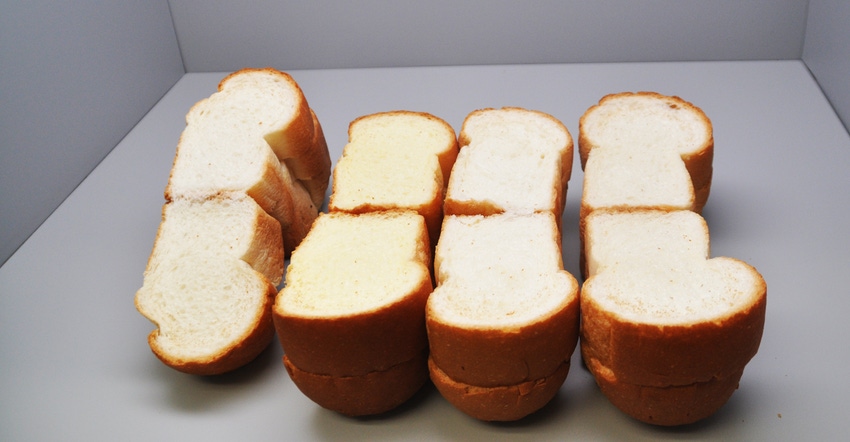October 30, 2019

November is a great time for pumpkin spice and everything nice, but it's also the perfect time to celebrate National Bread Month. The wheat that Kansas grows is exceptionally adept at creating tasty, homemade bread, so be sure to celebrate this homegrown holiday.
One bushel of Kansas wheat can produce 90 loaves of whole wheat bread. In 2019, 1 acre could feed a family of three for more than 14 years. Or that same acre could feed 15,600 people for one day. In fact, the entirety of the 2019 Kansas wheat harvest could produce over 30 billion loaves of bread, which would feed the entire world population for almost 10 days.
When you're baking your own warm, toasty loaf made from Kansas wheat, remember that the USDA's Dietary Guidelines for Americans stress the need to make half your grains whole every day, so be sure to add a little variety in the type of flour you use. A typical loaf of bread contains 16 ounces of flour, which could differ based on recipe and type of flour.
Both whole grain flour and enriched flour are important to maintaining a healthy diet, but what's the difference between the two? A kernel of wheat contains three parts — the bran, the germ and the endosperm. The outer layer is called the bran, which contains fiber, B vitamins and other minerals. The germ is the plant's embryo. The endosperm is the germ's source of nutrition and contains protein and carbohydrates. Whole grain wheat flour contains all three parts of the kernel, while enriched flour only contains the endosperm.
As enriched flour is milled, some nutrients lost in the milling process are added back to the flour, along with additional nutrients such as iron and folic acid. This fortified flour is the top source of folic acid in women of child-bearing age and has contributed to reducing neural tube defect rates by 36%.
Benefits of regular whole grain consumption include reduced risks of stroke, type 2 diabetes and heart disease. Whole grains are simple to incorporate into your diet. Try swapping out spaghetti, tortillas or loaves of bread for their whole grain alternatives or be adventurous and try cooking with whole wheat berries.
Both enriched flour and whole grains are important to a healthy diet. The Dietary Guidelines for Americans recommend that at least half of the five to eight servings of grains consumed daily should come from whole grain sources. Even though half of Americans' grains should be whole, many consume less than one serving per day.
Baking can be a great time to practice math as well as talk with children about nutrition. Younger children can help count ingredients like the number of cups of flour being added to the dough. Talking about fractions while measuring can help older children visually understand how fractions work. The best memories are made from scratch, and National Bread Month is a great time to bake up some tasty, tasty memories.
Are your baking skills still on the rise? Online resources from the National Festival of Breads, Home Baking Association, Wheat Foods Council and Grain Foods Foundation offer tips and recipes.
Source: Kansas Wheat, which is solely responsible for the information provided and is wholly owned by the source. Informa Business Media and all its subsidiaries are not responsible for any of the content contained in this information asset.
You May Also Like




